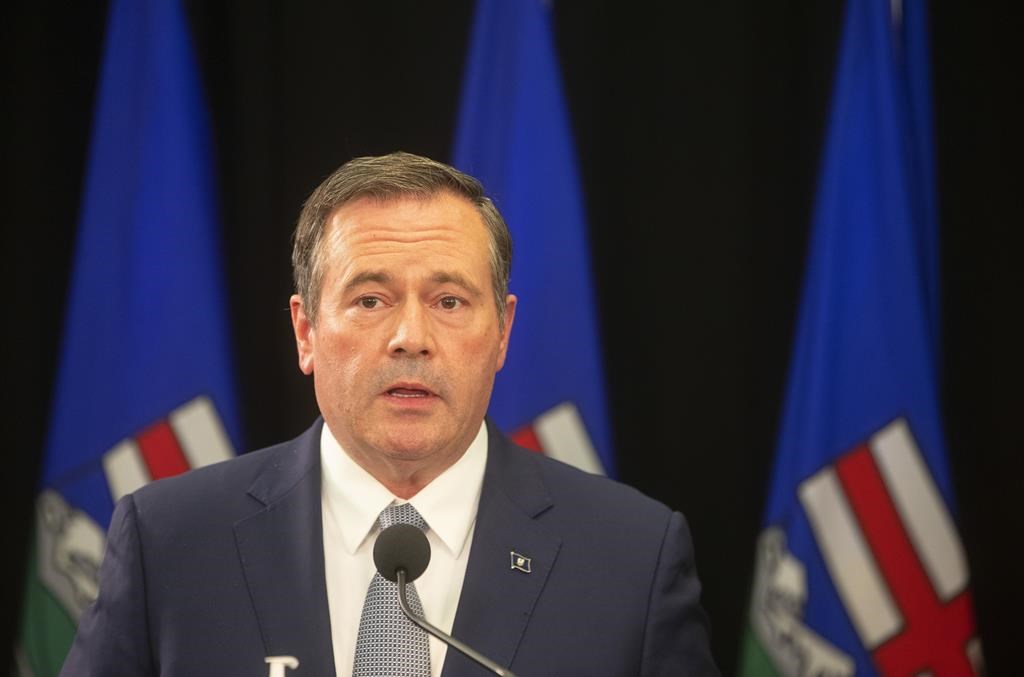Prime Minister Justin Trudeau is talking tough on carbon emissions.
As world leaders gas on in Glasgow, Trudeau is taking an aggressive stance on emissions caps, ending energy industry subsidies and carbon pricing.
Albertans, ever quick to feel victimized and/or affronted, are taking it very personally.
True, oil and gas has been the biggest of economic drivers in the province for decades. But the industry is also the biggest single source of carbon emissions in the country.
While Trudeau struts his country’s renewed environmental commitment on the world stage, Alberta’s premier is sniping from the weeds in Edmonton.
Jason Kenney decided to skip the international marketing opportunity of taking a trip to COP26 to tout all the provincial energy industry has done to reduce emission.
Beleaguered at home, the premier instead is playing to the provincial crowd, dismissing Glasgow as a meaningless “gabfest”.
This week he announced 16 emission-busting industry projects which will get $125 million in funding from the provincial heavy emitters tax fund (and $50 million from the feds, but Kenney’s barely mentioning that.)
The projects may reduce seven million tonnes of greenhouse gas emissions by 2030, crowed Kenney. To put that in some perspective oilsands operations alone account for 70 million tonnes of GHGs annually.
Some of the projects certainly have that cool factor. Canadian Pacific Railway, for instance, is going to retrofit three locomotives to run on hydrogen. Why exactly one of Canada’s richest companies needs government subsidies to try this technology out is just an untidy detail.
Kenney argues that “the path forward” is to incentivize innovation and create jobs rather than punish people with carbon caps and taxes.
Alberta is not just talking, it’s acting, he says.
But the action is pretty slow and the results are sometimes problematic. Alberta is hanging much of its “innovation” cred on technologies such as carbon capture and sequestration, which still assumes oil, gas and petrochemicals are going to continue for many years to come as an economic engine. So called ‘blue hydrogen’ is a byproduct of natural gas.
But Kenney’s not wrong about the need to act. Trudeau has been happy to talk long-range emission reduction targets, but the proof is in results.
Ultimately the question is what kind of action will actually have a meaningful impact.
Many captains of industry admit in boardrooms and at conference podiums that a properly set carbon price is ultimately the stick that will drive capitalism forward. As high emission fuels become too expensive, low-to-no carbon innovation becomes a bottom-line necessity.
The problem is how hard and how fast can a government wield the stick.
Environmentalists argue that no government is hitting the big carbon producers nearly hard enough to save the planet.
Despite Kenney’s opposition to pricing carbon, the money for the province’s latest spate of tech projects actually comes from Alberta’s own homegrown carbon tax on heavy emitters.
But the pilots and startups funded by those carbon tax dollars still have a long way to go to pay off and make a dent.
Kenney tossed out at his giveaway press conference that Alberta’s updated climate policy is coming in the next few weeks. But he also declared, “We will vigorously defend the economic interest of Alberta which includes the right to develop our resources and to do so in a responsible way while also seeking to reduce carbon emissions.”
That’s one seriously mixed message.
The prime minister and the premier are both thrashing on the carbon file. This past week has taxed speech writers and speechifiers to the max.
What the planet needs is less of that speechifying and more effective change. It’s not in either Canada’s or Alberta’s interests to be left behind in a cloud of ineffective rhetoric, half measures and failed targets.









